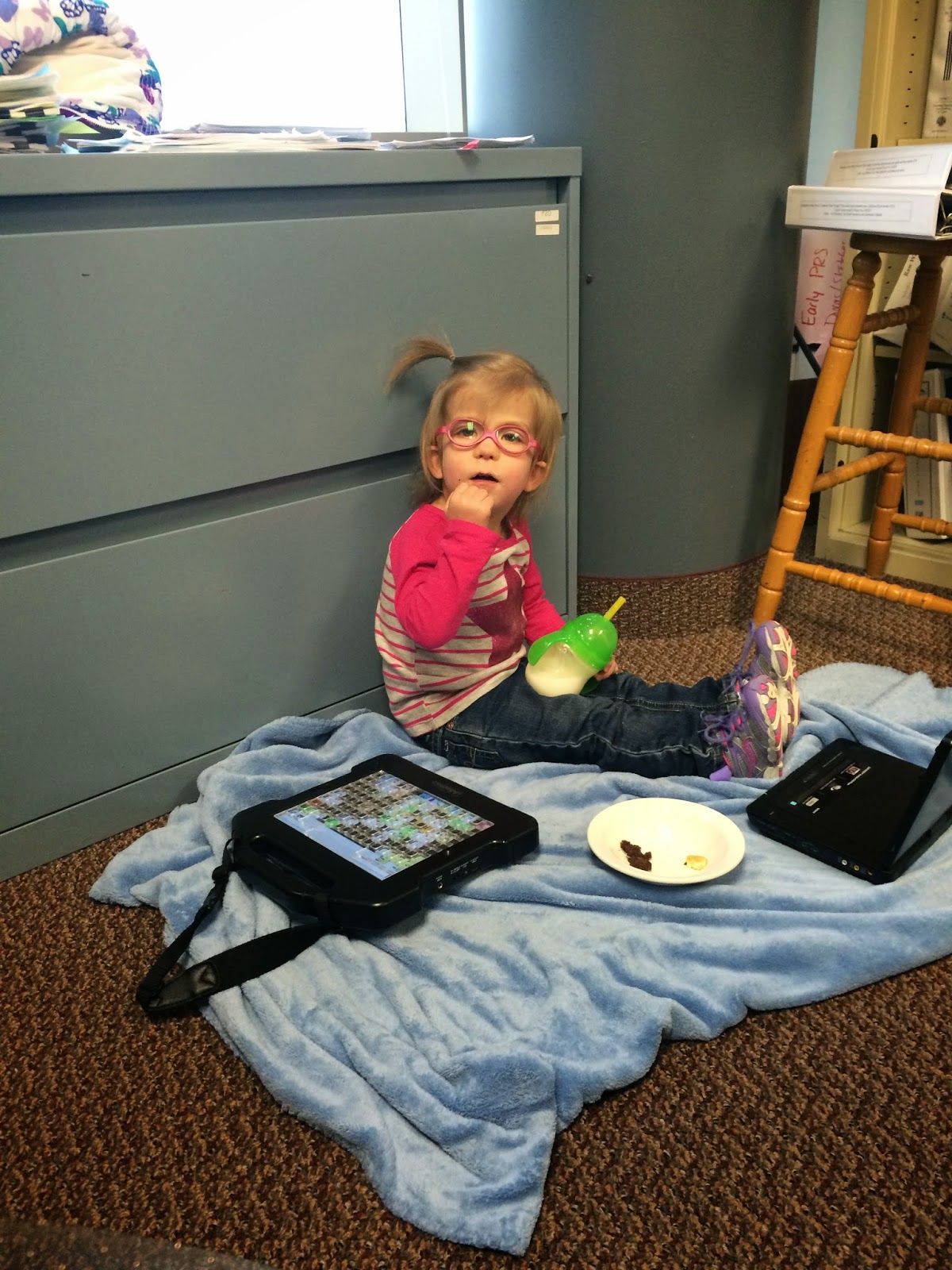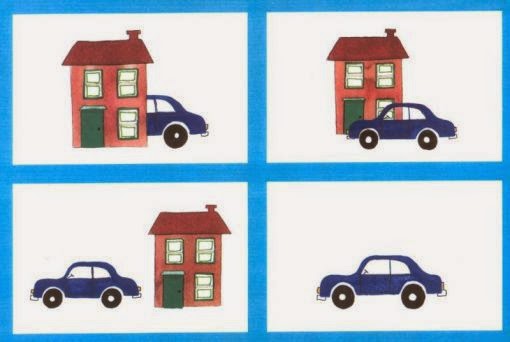My daughter Maya, like many children with special needs, has
undergone (too) many evaluations. Her skills and knowledge have been
quantified, over and over again, with varying degrees of accuracy. Many parents
of children with special needs speak about receiving the evaluation reports
with a hint of PTSD in their voices and tears in their eyes. I see their posts
in Facebook groups, about a son who has “the cognitive functioning of an 18
month old” or a daughter with “very little receptive language, according to the
recent report.” Many have been devastated by these reports.
I am not one of these parents. I have not been devastated by
the reports.
Ok, the first one briefly knocked the wind out of me, but I recovered
quickly.
Why not? Perhaps because Maya’s scores have been promising?
Or “average”? Or “low average”?
No. No, not because of that. As a matter of fact, her first
round of cognitive testing was abysmal. She scored in the bottom 0.4th
percentile---meaning that 99.6% of all children her age were more cognitively
advanced than Maya. Her receptive language evaluation (at 2.5 years old) estimated
that she could produce 1-2 words and that she understood 1-2 words.
They said that she understood 1-2 words. At 2.5 years old.
I wasn’t gutted by the reports because I knew they were
worthless. At the time, I thought everyone knew they were worthless---that they
were just a means to an end (the end goal being to score “disabled enough” to
qualify for services). I thought the results were like She’s in the 0.4th percentile—wink, wink. It wasn’t
until I became more immersed in the special needs community, particularly the
community of parents who have children who are functionally nonverbal, that I
realized something startling---people are believing these numbers.
Parents, you cannot believe these numbers.
Not only will believing the numbers send you down some sort
of spiral-of-terrible-feelings, but believing them will change your
expectations for your child. The numbers will change what you believe your
child is capable of, they will plant seeds of poisonous doubt, and they will
corrode your ability to presume competence. If you have a child who doesn’t
speak, one of your biggest, constant jobs in life will be to advocate for their
people to believe in them . . . so if you start to lower your expectations,
others will follow.
Plus, really, the numbers are garbage.
My undergrad degree was in science (zoology), my first
master’s degree was in teaching secondary science, and I was a classroom
teacher for 8 years. This means that I have both spent a fair amount of time
reading scientific journals and that I have experience with assessments of
children (and their limitations). I listen to news stories with a skeptic’s ear
(who funded that study, what was the
sample size, how did they control for these 12 other variables, etc). I see
the limitations of a standardized test as quickly as I see the potential data
collected. I take all reports with a grain of salt, by nature. But when I saw
the way that Maya’s evaluations were done, I realized that it’s not just a
grain of salt needed when looking at cognitive assessments (or receptive
language assessments) of nonverbal kids, it’s a mountain.
Let’s think about the
tests: If an evaluation is being done on a child who can’t functionally speak,
can’t read, and can’t write, answers to questions would basically be limited to
two methods of production: pointing to
an image in a field (which item would you use to drink?) or completing performance
tasks (such as arranging tiles to match a pattern). There are significant variables
in both of these models that can result in scores that are erroneously low---false negatives.
pattern sheets that would be used with tiles
Performance Tasks: It’s easy to see why the
performance tasks would result in low scores for many of our kids. The only
examples that I clearly remember were about using tiles/blocks to duplicate or
continue patterns. For a child like Maya, who struggles to use her fingers to
manipulate anything small, this was a very challenging task. She also has apraxia, which means that the messages from her brain to her muscles get derailed---so she could be thinking "move the tile forward" but her hand won't respond. When we got to these questions, Maya refused to try
and put her head down.
So, did her inability to engage with the task indicate that:
a) she didn’t recognize the pattern
b) she didn’t
understand the question
c) she didn’t want to try a task that would be simultaneously
cognitively taxing and physically close-to-impossible
Who knows. But for
scoring purposes, that’s a fail. This is a false
negative. The absence of a positive response in this situation doesn’t reliably
indicate a cognitive limitation, but it will be scored as one.
Pointing at pictures: When I first saw a flipbook
that would be used to evaluate receptive language, I thought it looked like a
great idea. Maya was probably around 2 years old when I saw the test
administered, and while I sat silently and didn’t interfere, I was surprised by
how something that at first glance seems fairly straightforward and objective
was actually very subjective and unreliable. There are a few things that need
to be taken into consideration when thinking about these tests.
1. Personality: Children with complex communication needs
often have a fairly passive personality with regards to getting their point
across (due in large part to the fact that other people--parents, siblings,
teachers--often step in to try to communicate for them). In addition to being
passive, our kids learn that sometimes acting clueless is a great way to avoid
the task at hand (hours of therapy reinforced this for Maya---act clueless, the
therapist will adjust the task or change to a new one). While I can’t speak for
all nonspeaking kids, Maya mastered “the blank stare” (in which she would
simply stare around like she didn’t hear anyone and had no knowledge of what
was transpiring around her) at a young age. I will never forget watching a new therapist
try to cheerfully get Maya’s attention to give her back her car keys: Maya! Maya, over here! Those keys are shiny,
right?! I’m going to need the keys back now! Hey, Maya! and then I was all Maya, quit it and give her the keys and
she looked up and handed them over. If a child stares blankly at an evaluator and doesn't engage with the test, that is not necessarily indicative of a lack of understanding. It's a false negative.
2. Modified abilities lead to modified experiences: One page of the receptive language test had images of art related items (crayons, scissor, glue, etc) and Maya was asked to identify the scissors. Maya
didn’t know what scissors were when she was two---she was an only child who
spent all of her time at home with me and in home therapy, and she had
basically no fine motor ability. She had never seen scissors. This is only one
example, but there were several. Did she
know what scissors were? No. Was this indicative of her ability to understand,
absorb, and recognize language? Of course not. It was indicative of the fact
that her atypical abilities were leading her through an atypical childhood. It
was a false negative. (I bet typical kids don’t know what chewy tubes or
z-vibes are---Maya would have nailed those ones.)
3. A will, but not a way: For kids with disorders like apraxia or other neurological conditions, there are times when their body does not follow the directions being sent out by their brain. They may be thinking "reach out and touch the scissors, reach out and touch the scissors" but then see their arm reach forward and their hand make contact with the glue. If I stand up and quickly spin in place several times, no amount of me thinking "now run in a straight line!" is going to make that actually happen. It's a physical limitation. Modifications can be made to tests and testing environments to attempt to minimize these effects, but neurological motor planning troubles must be taken into account as a possible source of false negatives.
4. Communication vs. Testing: Children who are functionally
nonverbal are often very interesting communicators who use a variety of methods to get their points across:gestures, sights, sounds, meaningful glances, avoidance. One thing that tends to be
fairly consistent is the ability to communicate via pointing and pictures: even
before Maya used picture cards or communication technology, she could
communicate by pointing to the pictures in a book. She pointed to the cow, I
would say “A cow! Mooooo!” She pointed to the moon, I would say “That’s the
moon! It comes out at night.” Or, outside of books, if she pointed to the
refrigerator, I would say “Are you hungry?”
During these tests our children are presented with a field
of images and asked a question that has an “obvious answer”. The problem is
that presenting a nonspeaking person with a field of images can be akin to
saying “Check these out! Which one speaks to you? Which one reminds you of
something? Which one do you want to talk about?”
I'm willing to bet that if I showed this to Maya and said "Which picture shows the car in front of the house?" she would point to the first picture, look pointedly at me, and laugh. Translation: "Mom! There's a car driving into a house! This is ridiculous! . . . Wait, did you ask me a question?"
Example: Maya was 2(ish) and was in the middle of a
receptive language test. The doctor flipped the page and said “Which one is the
hairbrush?”, and Maya pointed to the toothbrush instead of the hairbrush. Obvious
wrong answer, obvious confusing of one "brush" with another, right? No, not right. We
had been talking about tooth brushing at home all morning. We had read a book
about going to the dentist. We had bought a new toothbrush the day before. When
the doctor flipped the page and asked about a hairbrush, Maya was already
fixated on the toothbrush (which looked just like hers, by the way) and
reaching toward it. As she tapped it, she turned to make eye contact with me. I
saw her saying Look! A toothbrush, just
like mine! We were just talking about brushing teeth! The doctor saw the
wrong answer. A false negative.
Parents, take heart. Professionals, take heed. There is no
reliable standardized way to assess the receptive language or cognitive function of a person
with complex communication needs. Even now, with a robust language system, Maya
has a way of seemingly jumping to unrelated topics that are actually related (but their relation is something that only she would know). Here’s a final example: On Tuesday Maya went to her after-school speech therapy,
and this happened:
Therapist: “How was school?”
Maya: (glancing at the fire alarm over his head, in the corner
of the room, and then using her device
to spell) “f-i-r-e.” (copied from the side of
the alarm box)
Therapist: (looking up at the alarm) “Yes, that says ‘fire’ .
. . but let’s focus-I asked you how your
day was. Did you have a good day at
school?”
There was no way for him to know that her school had a fire
drill that morning.
He thought she wasn’t paying attention, but she actually was
telling him about her day.
False negative.


.JPG)
.JPG)
.JPG)

.JPG)
.PNG)
.JPG)

.jpg)





.JPG)
.PNG)


.PNG)

.JPG)
.JPG)
.JPG)
.JPG)










.JPG)
.PNG)
.JPG)
.JPG)








.JPG)


.JPG)
.JPG)
.JPG)


.JPG)




.jpeg)
.JPG)
.jpeg)


.JPG)
.JPG)
.JPG)
.jpg)